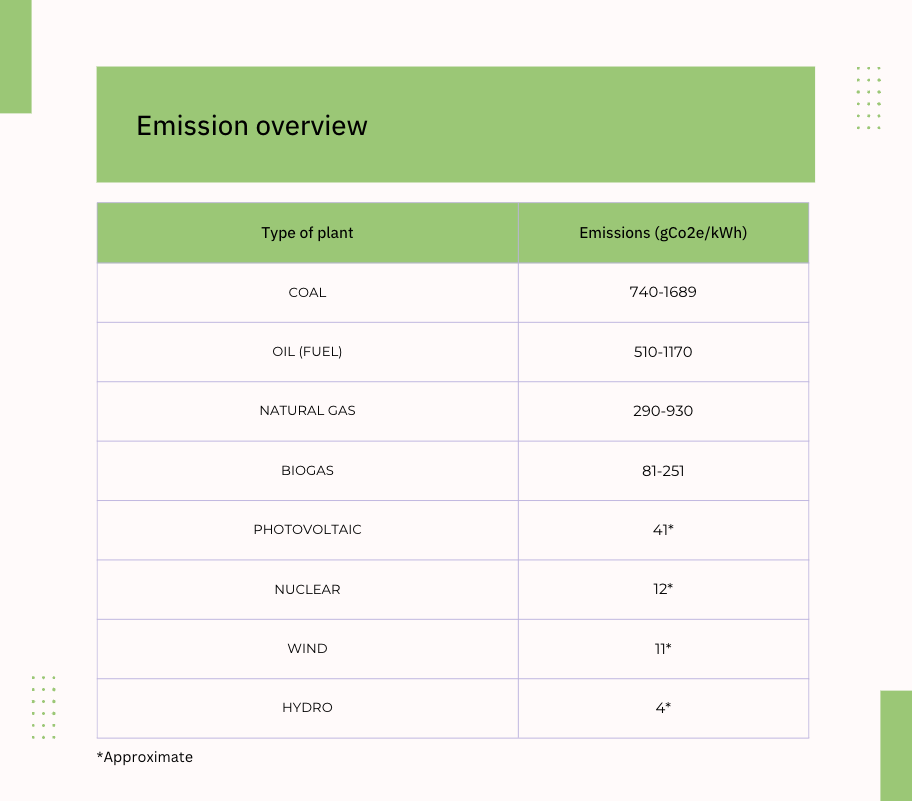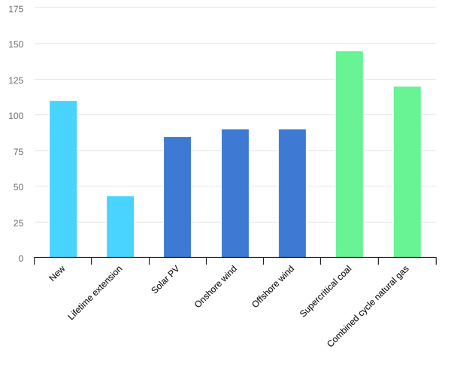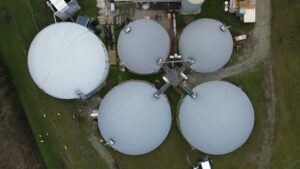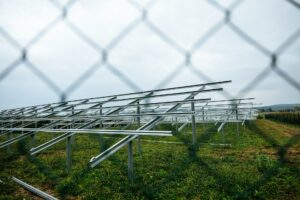
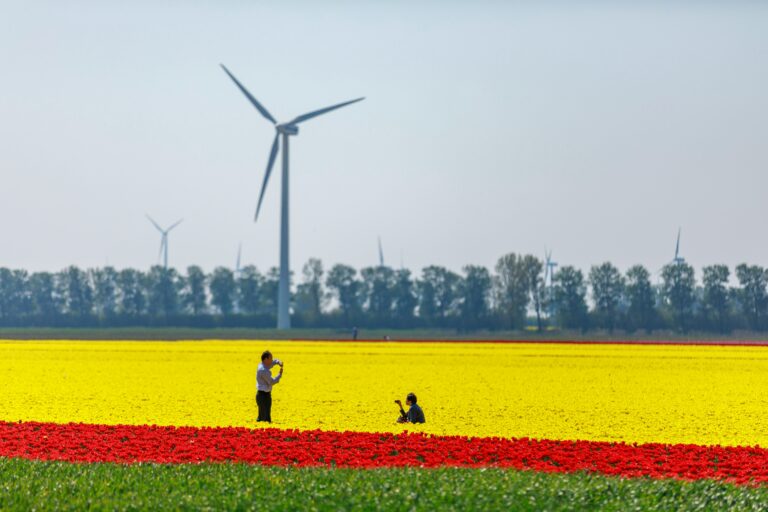
The benefits of renewable energy
As severe weather events become more frequent and intense, the benefits of renewable energy become increasingly clear. Currently, the world economy invests around $1.8 trillion annually in clean energy and infrastructure, compared to roughly $1.1 billion in fossil-fuel infrastructure investments.
But to achieve zero emissions by 2050, renewable energy investments has to more than double by 2030, reaching approximately $4 trillion. So, beyond the environmental benefits of having a climate that doesn’t try to kill us, what are the benefits of renewable energy? In this article, we’ll explore the numerous positive impacts of renewable energy.
Table of Contents
The future relies on renewable energy
Our modern societies and growing global population has come at a steep price. Increasing populations and improved living conditions demand more natural resources, especially fossil fuels, to keep up with demand.
These fuels release gases that trap heat, leading to the most apparent impact of climate change: a hotter planet.
While a warmer climate might sound appealing in some geographies, it brings severe consequences such as stronger storms, droughts, rising sea levels, and extinctions, in others.
According to data from the United Nations, extreme weather events over the past fifty years have caused over two million deaths and $4.3 trillion in economic losses. The World Economic Forum forecasts that, driven by global warming, these numbers could rise to 14.5 million lives lost and $12.5 trillion in economic losses by 2050.
Carbon dioxide (CO2) is the most prevalent greenhouse gas, but other pollutants, like methane, also contribute to global warming. Different energy sources emit varying amounts of these pollutants. To simplify comparisons, we use carbon dioxide equivalent (CO2e), which represents the amount of CO2 needed to produce an equivalent warming effect.
Why renewable energy is important
With about 75% of total greenhouse gas emissions coming from our energy systems, renewable energy is crucial for keeping global temperature rise below 1.5°C. Most renewable energy sources produce little to no emissions, even when accounting for life cycle emissions.
Comparing renewable energy with fossil fuels becomes even more clear when you look at the numbers. The following list is an expression of how many grams of CO2 each technology releases for every kilowatt hour of energy produced:
Increasing the supply of renewable energy can significantly reduce global emissions, helping to control climate change. Additionally, as we will discuss in the following sections, the indirect benefits of renewable energy can profoundly impact the lives of many people worldwide.
Life cycle emissions refer to the emissions produced at each stage of a technology’s life—manufacturing, installation, operation, and decommissioning. The global warming emissions associated with renewable energy are minimal.
The benefits of renewable energy
Improved public health
The COVID-19 pandemic revealed a stark reality: pollution has a significant impact on our environment and health. During the lockdowns, mountain ranges became visible, cities cleared up, and waters turned crystal clear (insert picture). However, as normalcy returns, so does the visible blanket of pollution linked to increased risks of cancer, heart attacks, respiratory problems, and other health conditions.






According to the World Bank, the global cost of health damages from air pollution is $8.1 trillion, accounting for 6.1% of global GDP. A Harvard University study estimated that the life cycle costs of burning coal alone reach $74.6 billion annually. This translates to 4.36 cents per kWh of power produced, about one-third of the average electricity rate for an American household.
In contrast, renewable energy sources like solar photovoltaic (PV), wind, and hydro generate power without the same public health side effects. Although hydroelectric power plants can disrupt river ecosystems, most operators strive to minimize this damage. Biomass and geothermal systems do emit some pollutants, but their impact is much lower compared to coal and natural gas.
Water pollution is another critical issue often overlooked in discussions about fossil fuels. Renewable energy systems, such as PV and wind farms, require almost no water to operate. Fossil fuels, on the other hand, have a significantly detrimental impact on water resources. For example, in 2000, rinsing a Kentucky coal site contaminated over 100 miles of waterways. In 2010, an Enbridge Energy Partners pipeline rupture spilled 3.1 million liters of oil into the Kalamazoo River, causing a disaster that took years to mitigate.
The same year, the Deepwater Horizon oil spill added 636 million liters of oil to the Gulf of Mexico over 89 days, resulting in the largest and most catastrophic marine disaster related to offshore drilling.
Inexhaustible energy
The sun shines, the wind blows, rivers flow, trees and plants grow, and the Earth’s core remains hot. Each of these natural phenomena is another benefit of renewable energy: It never runs out. Currently, around one-third of our electricity comes from renewables, but this is far from where we need to be.
The International Energy Agency (IEA) estimates that nearly 90% of the world’s energy needs must be met by renewable sources by 2050 to achieve Net Zero targets, with solar PV and wind accounting for nearly 70%.
Jobs and other economic benefits
The fossil fuel industry employs a substantial number of people—about 32 million globally. However, the tide is turning. From 2019 to 2023, the clean energy sector added 4.7 million jobs worldwide, bringing the total to 35 million.
By 2030, the World Economic Forum forecasts that the clean energy transition will create 10.3 million net new jobs, even after accounting for the estimated loss of 2.7 million jobs in coal, oil, and gas industries.
In addition to direct job creation, clean energy growth generates positive economic “ripple” effects. Local municipalities and communities benefit from property and income taxes generated by renewable energy projects. For example, farmers, who often own extensive land, can earn secondary income from land leases. In Germany, the rental price for photovoltaic (PV) installations on farmland ranges from €3,000 to €3,500 per hectare per year, compared to the average cost per hectare of €357, making it an attractive option for many farmers.
Contrary to the belief that solar parks reduce arable land, EU farmers are required to set aside 4% of their land, while solar parks need only 1-2% for the energy transition. This means solar installations do not significantly impact food production and contribute to environmentally friendly energy.
Moreover, local communities increasingly share profits from energy parks to gain acceptance for nearby projects. For instance, the Swedish developer Vattenfall sold shares in its upcoming offshore wind farm off the west coast of Denmark, allowing residents in the neighboring municipality to become part owners and share in the profits.
Stable energy prices and resilience
Renewable energy not only makes electricity more affordable but also enhances price stability and supply resilience.
The importance of stable and resilient energy supplies was underscored in Europe after Russia’s invasion of Ukraine. In the first two weeks following the invasion, prices of oil, coal, and gas skyrocketed by 40%, 130%, and 180%, respectively. In response, the EU Commission launched the RePowerEU plan, aimed at diversifying energy supplies and increasing renewable energy production to minimize dependency on Russia and safeguard against future price fluctuations. Achieving the REPowerEU objectives requires an additional investment of €210 billion by 2027.
While renewable energy requires significant upfront investments, the levelized cost of energy (LCOE) for wind and solar is lower than that of fossil fuels. As technologies mature and economies of scale accelerate, the rationale for opting for renewable energy becomes increasingly compelling. For example, solar panel prices are currently at an all-time low, and the cost of battery storage systems has plummeted by 90% since 2010, now costing less than $140 per kilowatt-hour—a testament to rapid advancements in battery technology.
LCOE measures the lifetime costs divided by energy production, calculating the present value of the total cost of building and operating a power plant over its assumed lifetime. This metric allows for the comparison of different technologies with varying lifespans, project sizes, capital costs, risks, returns, and capacities.
Fossil fuel prices, in contrast, can vary dramatically and are prone to substantial swings. For example, the US experienced a rapid increase in coal prices due to rising global demand before 2008, followed by a sharp decline when demand fell.
Fossil fuel infrastructure is also more vulnerable to weather events compared to distributed renewable energy. For instance, Hurricane Sandy severely damaged fossil fuel-dominated electric generation and distribution systems in New York and New Jersey, leaving millions without power. In contrast, renewable energy projects in the Northeast weathered the storm with minimal damage or disruption.
Additionally, renewable energy does not face the same water scarcity issues as fossil fuels, which rely on water for cooling. With increasing droughts worldwide, highlighted by Cape Town’s close call with “Day Zero,” renewable energy’s minimal water usage becomes even more critical.
